We’re improving road safety through various infrastructure and speed management solutions. These improvements can prevent crashes happening, or if a crash does occur, they can stop people from being killed or seriously injured.
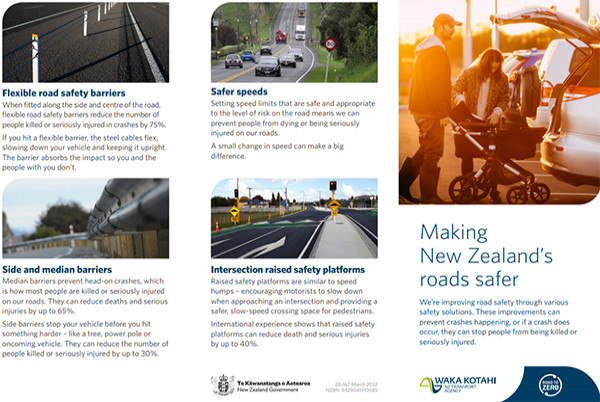
Making New Zealand's roads safer
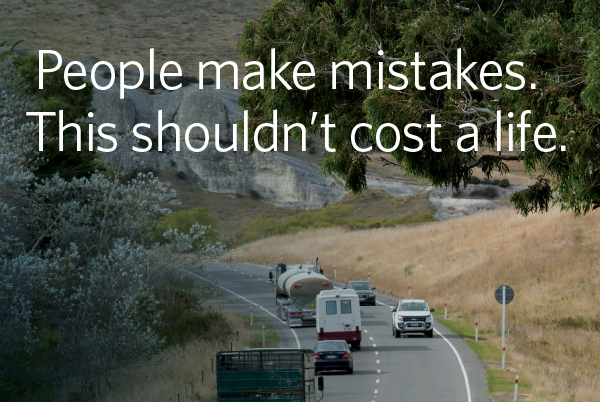
People make mistakes. This shouldn't cost a life.
We all make mistakes, but there are changes we can make so simple mistakes don’t result in someone being killed or seriously injured on our roads.
Waka Kotahi NZ Transport Agency is installing proven safety interventions on New Zealand’s highest risk roads as part of the Road to Zero road safety strategy.
People make mistakes
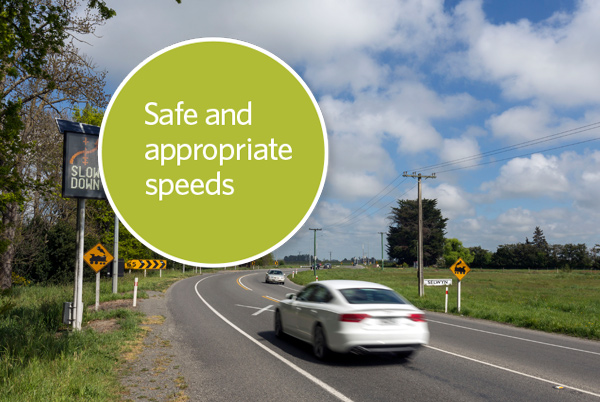
Faster speeds reduce the time you have to react to a mistake, yours or someone else’s.
When speeds are appropriate for the road, simple mistakes don’t need to end in tragedy.
We want everyone who uses our roads to get home safely. There are a range of things we can do to make the road safer such as putting in signs, safety barriers and rumble strips. But making sure the speed limit is safe and appropriate for the road is still one of the best ways to save lives on New Zealand roads.
This is part of the Waka Kotahi NZ Transport Agency’s contribution to Road to Zero, New Zealand’s road safety strategy.
For more information on safe speeds:
Safer speeds save lives
Near miss or tragedy – the difference is speed
There are a number of factors that go into setting safe speeds on our roads. These include the number of people and their travel modes on the road, the function and features of the road and its surrounding environment.
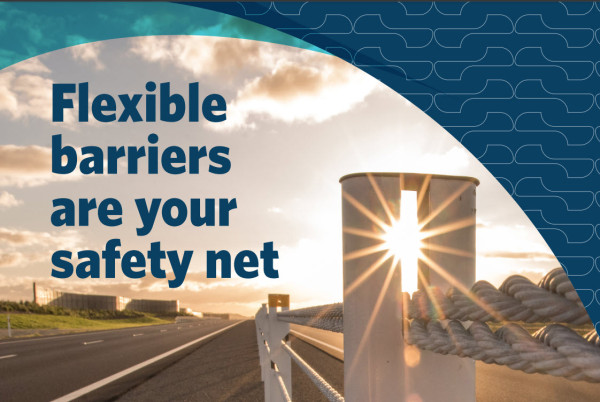
Flexible barriers are your safety net.
More people are killed and seriously injured in head on crashes than any other crash type. Flexible road safety median barriers are life savers. They prevent you from crossing the centre line and potentially hitting another vehicle travelling in the opposite direction.
If you hit a flexible barrier, the steel cables flex, slowing down your vehicle and keeping it upright. They absorb the energy of the impact, which means that you and your passengers don’t.
When flexible barriers are fitted along the centre of the road, they can reduce the number of people killed or seriously injured in crashes by 75%.1
Flexible road safety barriers
Motorcyclists and safety barriers
Agricultural vehicles and safety barriers
Watch the video below to learn more about how flexible road safety barriers work.
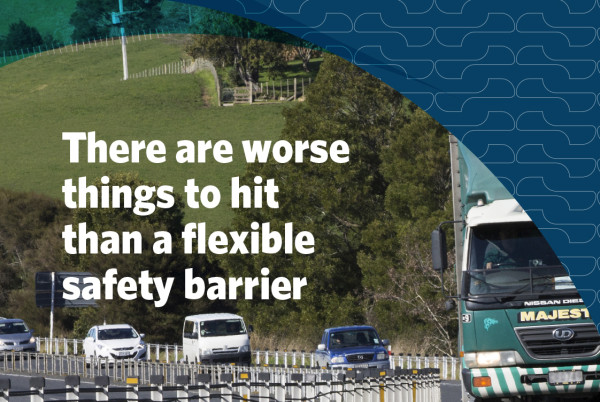
There are worse things to hit than a flexible safety barrier.
Safety barriers save lives. They stop you before you hit something harder, like a tree, pole or oncoming vehicle.
When safety barriers are installed along the side and centre of the road, they can reduce the number of people killed or seriously injured in crashes by 75%.1
Side and median safety barriers
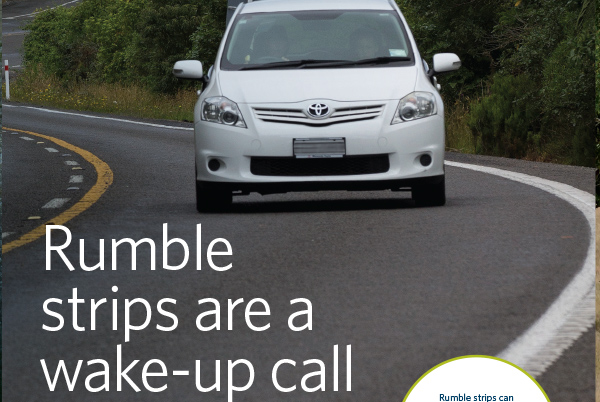
Rumble strips could be the difference between straying off the road or staying on it.
These raised markings give off a rumbling sound when you drive over them. This gives you a wake-up call if you stray across the line.
Rumble strips can reduce fatal run-off-road crashes by up to 42%.2Rumble strips
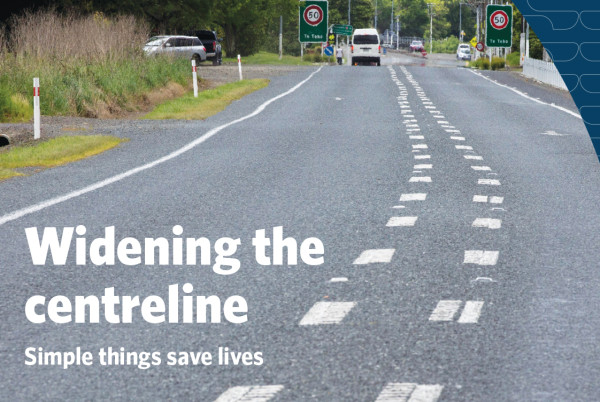
Widening the centreline – simple things save lives.
A wide centreline means more space between you and oncoming vehicles. It’s about making sure simple mistakes don’t cost lives.
More space between lanes can reduce serious crashes resulting in deaths and serious injuries by up to 35%.1
Widening the centreline
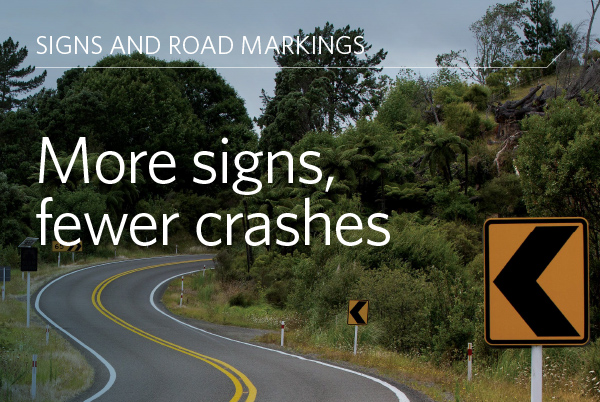
Signs and road markings warn people of risks further down the road like intersections, stop signs or tight corners.
The right signs in the right places make a big difference in preventing crashes - signs warning drivers about a corner can reduce crashes by up to 57%.2
Signs and road markings
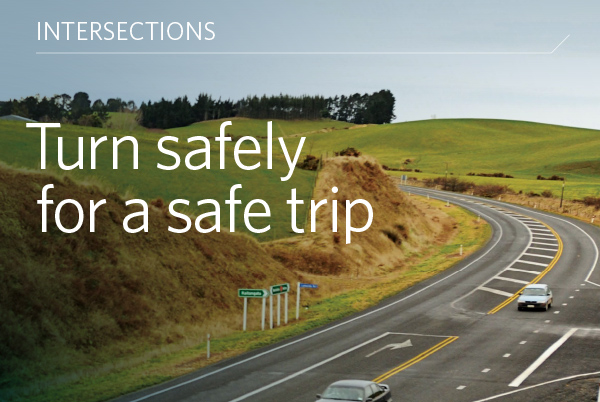
Our intersections can be dangerous places, but there are a range of things we can do to make them safer.
Turning lanes, better road signs or Intersection Speed Zones are just some of the improvements we can make.
We can cut back trees so it's easier to see other vehicles, or improve the road surface so drivers are less likely to skid.
17% of deaths and injuries happen at rural intersections.3
Intersections
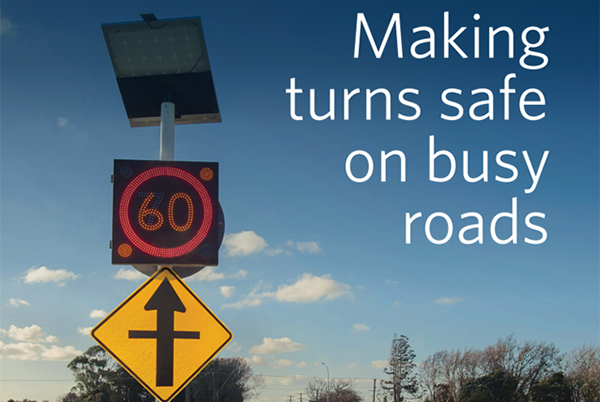
Intersection speed zones help reduce speeds around intersections, making it easier and safer for people to pull into or out of a side road.
You’ll have more time to react to mistakes and avoid collisions, so crashes are less likely, and the outcome is less severe, if a crash occurs.
Making turns safe on busy roads
Watch our video below on how intersection speed zones work to make our roads safer.
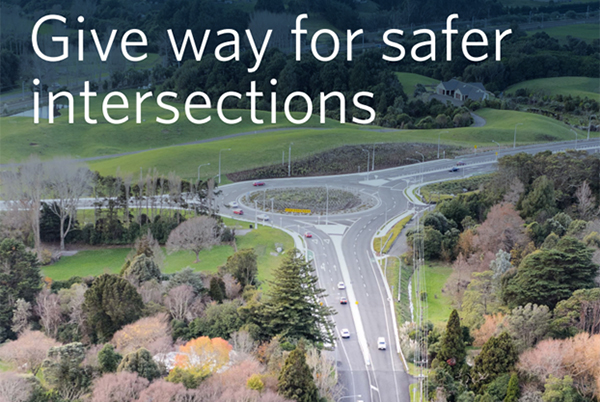
Roundabouts reduce speeds, making it easier for you to choose the right time to enter flowing traffic.
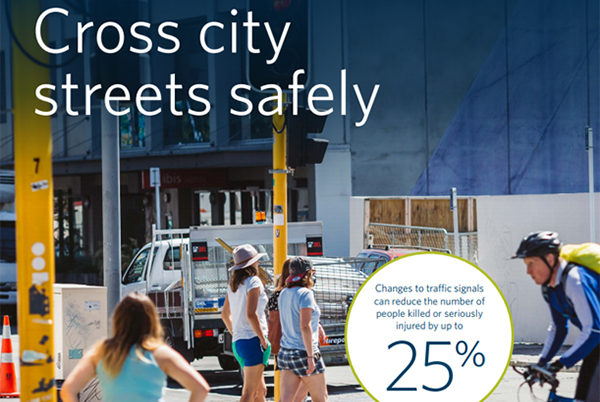
Urban intersections can be very busy places, with lots of people driving, walking and riding through them.
Changes to the phasing and timings of traffic signals can help people move more safely through intersections, reducing the number of people killed or seriously injured by up to 25%.1
Traffic lights
1 Standard Safety Intervention Toolkit [PDF, 977 KB], published September 2021, Waka Kotahi NZ Transport Agency. Second edition. NZBN: 9429041910085.
2 High Risk Rural Roads Guide [PDF, 3.6 MB], published September 2011, Waka Kotahi NZ Transport Agency. First Edition. ISSN 978-0-478-38038-5 (online).
3 High Risk Intersections Guide [PDF, 5.2 MB], published July 2013, Waka Kotahi NZ Transport Agency. ISBN: 978-0-478-40780 (online).